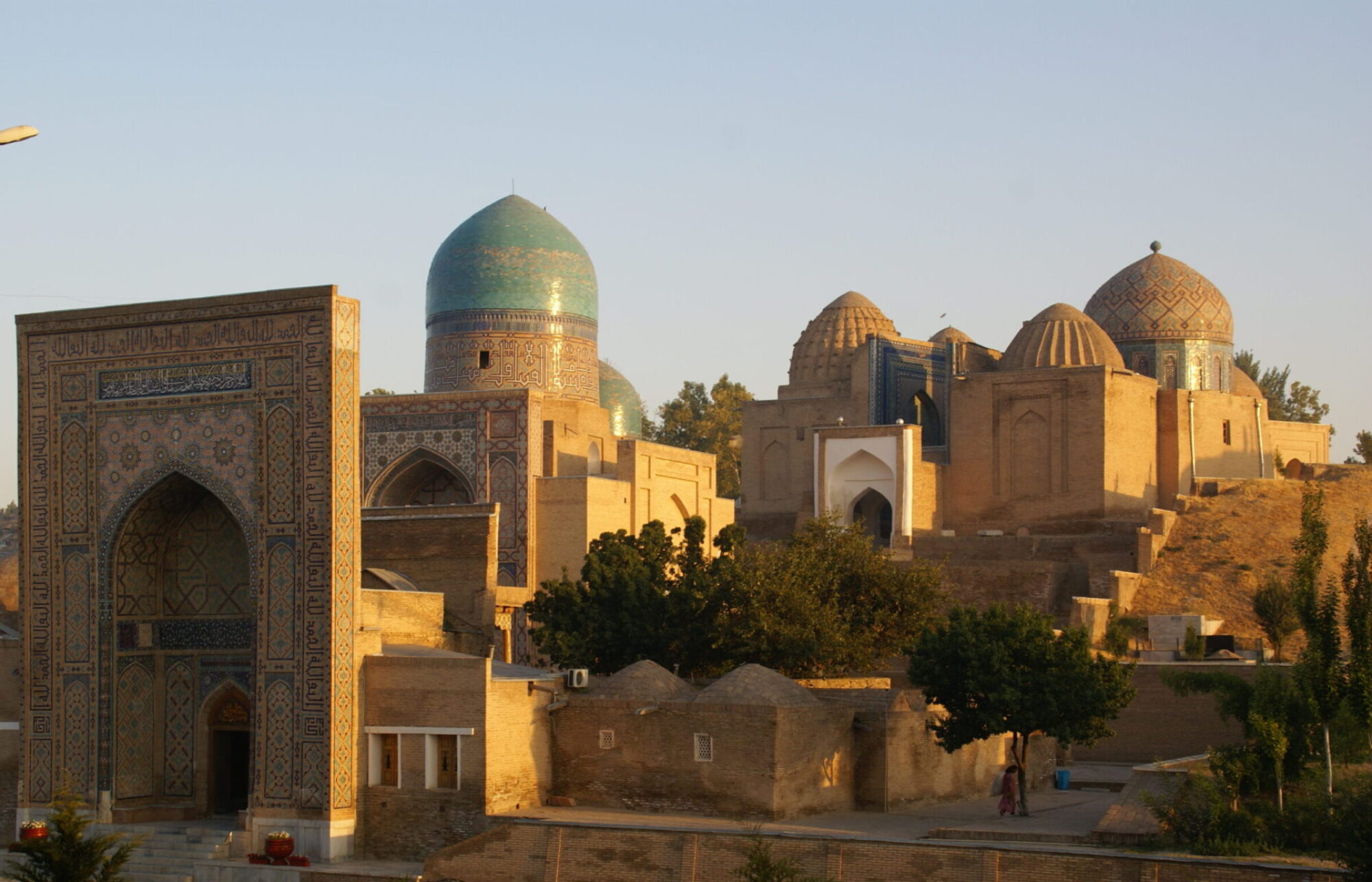The shrine of the eighth imam of the Twelver-Shi’a in Mashhad is one of the largest and wealthiest pilgrimage sites in the world. The golden dome mausoleum of Imam ‘Ali al-Riza (d. 818) stands amidst a large complex of courts, monumental gateways, Islamic religious schools, museums, libraries, bookshops, and offices that cater to thousands of pilgrims each year. The city is seen as one of the most important spiritual centres not only in Iran but also across Central Asia, as heir to Persianate high culture and Timurid artistic excellence. The shrine attests to ʻAlid piety widely spread across the Turco-Iranian sphere. The ziyarat (pilgrimage) transcends Shi’a–Sunni sectarianism and religious affiliations.
Gawharshad Begum (d. 1457) was the primary wife of Timur’s youngest son Shahrukh (1377-1447) and mother of his famous sons Ulugh Beg (1394-1449) and Baysunghur (1397-1434), both eminent scholars and patrons of the arts. Even though in 1409 Gawharshad and Shahrukh moved the Timurid capital from Samarqand to Herat, their building activities were not limited only to imperial embellishments; they built extensively across the historical province of Khorasan. In Mashhad, Gawharshad erected a mosque and three madrasas (Islamic religious schools). The mosque is based on the four-iwan plan, with four arched gates situated in the middle of each courtyard wall. The main domed sanctuary consists of a deep iwan flanked with two minarets springing from the level of the court. The side walls are decorated with four tiers of arched niches. The green tiled dome is situated just behind the main sanctuary screen. All surfaces are clad with mosaic faience of the finest quality. Baysunghur created the epigraphic band that surrounds the main arched opening; he was a very talented calligrapher. We know from literary and epigraphic sources that during the reign of Shahrukh (r. 1409–1447), Qawam al-Din Shirazi was the most distinguished Timurid court architect. He built several ensembles in Herat, the Gawharshad Mosque in Mashhad and worked on other royal commissions after 1410 until his death on 21 February 1438 at Khargird, Iran.
The Imam ‘Ali al-Riza shrine was considerably expanded during the reign of Shah ‘Abbas (r. 1588–1629) as part of his urban renewal of Mashhad. Through a series of architectural additions it was transformed into one of the leading spiritual centre in the Safavid Empire (1501–1722). The Safavid shahs regarded Mashhad as a venerable arena for piety displays and dispensation of charitable acts through endowments. The new artistic promotion of the shrine reinforced the shahs’ kinship with the Shi’i imams and boosted their political claims as heirs of the imamate.


